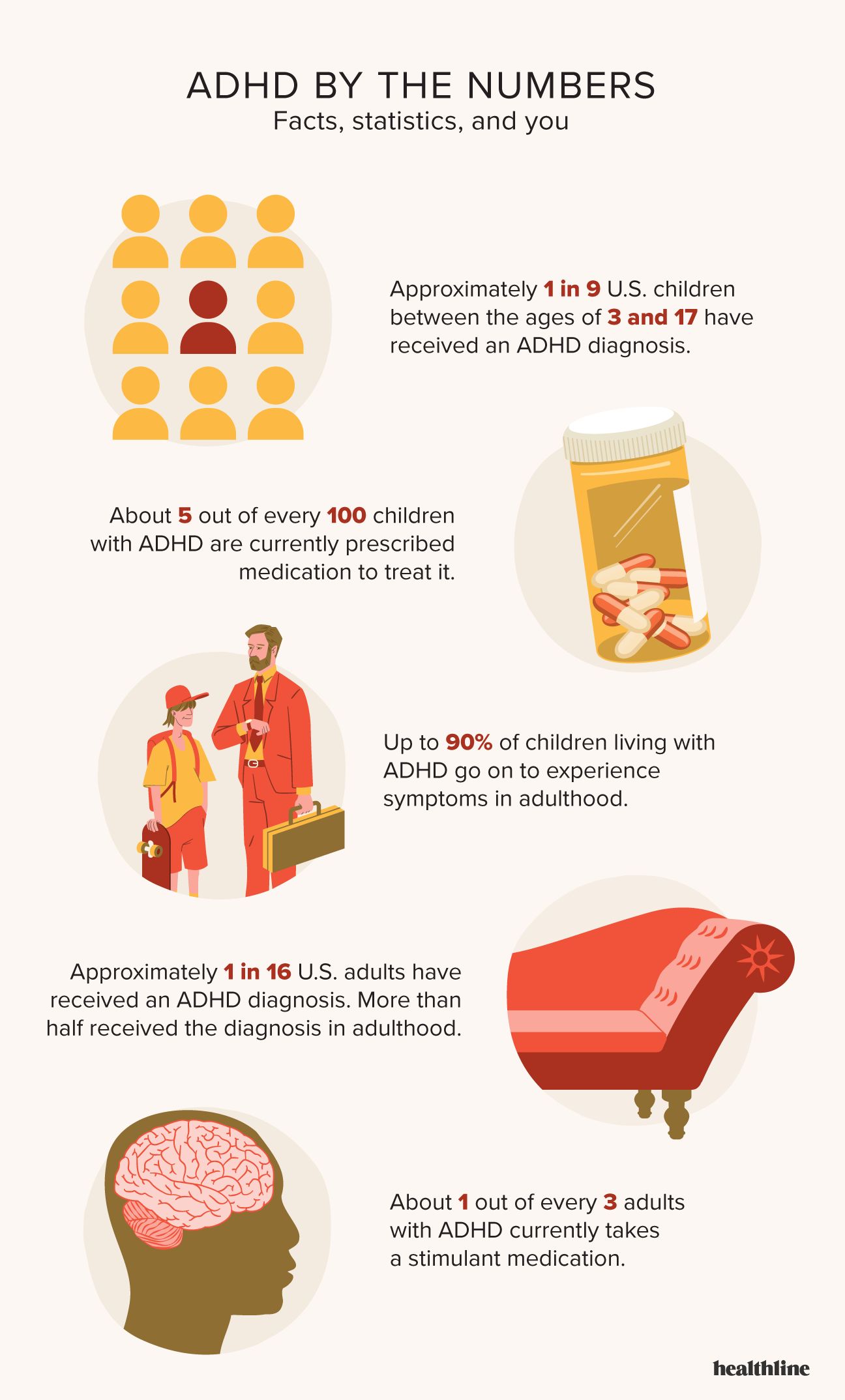ADHD is a complex condition that can be difficult to diagnose. The symptoms often overlap with common childhood behaviors, so it can be challenging to know what’s related to ADHD and what’s not.
Attention deficit hyperactivity disorder (ADHD) is a neurodevelopmental disorder characterized by symptoms of inattention, hyperactivity, impulsivity, or emotional dysregulation. This may look like:
- being easily distracted or forgetful
- difficulty focusing, completing tasks, or staying organized
- difficulty sitting still, frequent fidgeting, or restlessness
- talking excessively or out of turn
Although ADHD can be diagnosed at any age, symptoms must have appeared before age 12. Many children begin to display symptoms between the ages of 3 and 5.

There are demographic factors that impact the likelihood of being diagnosed with ADHD.
For example, men and boys are more likely to receive an ADHD diagnosis than people of other genders. Experts suggest this could be due to differences in symptom expression and identification.
As a result, women and people with expansive gender identities are more likely to receive a diagnosis later in life.
Children living in households where English is the primary language are
And children living in households that make less than two times the federal poverty level have a higher probability than children living in higher-income households.
According to data from the
- 12% of Black children
- 12% of white children
- 10% of American Indian/Alaska Native children
- 6% of Native Hawaiian/Pacific Islander children
- 4% of Asian children
Overall, non-Hispanic children (12%) received a diagnosis at a slightly higher rate than Hispanic children (10%).
On the rise
ADHD diagnoses have increased in the past several years. More research is needed to determine whether this is due to increased awareness of the condition, improved access to healthcare, changes in how ADHD is defined, or other factors.
Approximately
A retrospective cohort study published in January 2025 found that adult ADHD diagnoses decreased by around 11% from 2016 to 2020. However, diagnoses increased 15% from 2020 to 2023.
50 states
According to data collected from 2016 to 2019, Western states have the lowest
States in the South and Midwest seem to have the highest rates. Mississippi has the highest rate overall.
Lowest rates:
- California: 5.3%
- Nevada: 5.7%
- Hawaii: 5.8%
- New York: 6%
- South Dakota: 6.7%
Highest rates:
- Mississippi: 14.4%
- Louisiana: 14%
- West Virginia: 12.9%
- Alabama: 12.1%
- Kentucky: 12%
According to data collected from 2016 to 2019, Northern states have the highest
Nebraska has the highest overall rate of any ADHD treatment. This includes one or more of the following:
- behavioral treatment
- medication
- mental health treatment
Nevada has the lowest overall rate of any ADHD treatment; however, it’s important to note that this figure is just over 65%, meaning over half of the children living with ADHD in Nevada are receiving some form of treatment.
Highest rate of medication for ADHD:
- Nebraska: 81.4%
- Alabama: 77%
- Delaware: 75.4%
- Louisiana: 73.9%
- Mississippi: 73.8%
Lowest rate of medication for ADHD:
- Nevada: 37.8%
- New Jersey: 41.1%
- District of Columbia: 45.9%
- California: 46.4%
- Washington: 47.9%
ADHD doesn’t increase a person’s risk for other conditions or diseases.
But some people with ADHD — especially children — are more likely to experience a range of coexisting conditions. They can sometimes make social situations more difficult or school more challenging.
Some possible coexisting conditions include:
- learning disabilities
- conduct disorders and difficulties, including antisocial behavior, fighting, and oppositional defiant disorder
- anxiety disorder
- depression
- bipolar disorder
- sleep disorders
- Tourette syndrome
- substance misuse
Cost is a major factor in how a condition affects someone. Treatment plans and medications can be expensive, and planning around payment can be stressful.
A
Medicines and treatments aren’t the only costs to consider when living with ADHD. Other factors that can add cost include:
- education expenses
- loss of work
- juvenile justice
- healthcare costs
ADHD is more common than many people realize, and the numbers are still going up. Learning the basics — like who it affects and how it’s treated — can make a big difference in understanding and supporting those who live with it.




